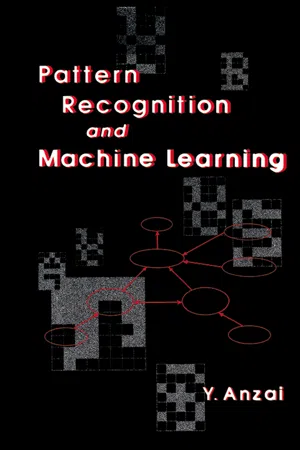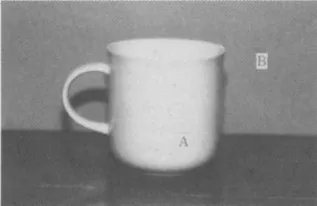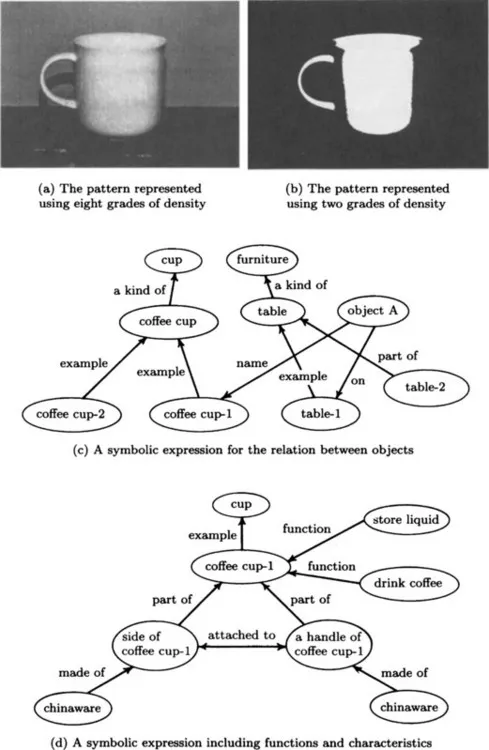
- 407 pages
- English
- ePUB (mobile friendly)
- Available on iOS & Android
eBook - ePub
Pattern Recognition and Machine Learning
About this book
This is the first text to provide a unified and self-contained introduction to visual pattern recognition and machine learning. It is useful as a general introduction to artifical intelligence and knowledge engineering, and no previous knowledge of pattern recognition or machine learning is necessary. Basic for various pattern recognition and machine learning methods. Translated from Japanese, the book also features chapter exercises, keywords, and summaries.
Frequently asked questions
Yes, you can cancel anytime from the Subscription tab in your account settings on the Perlego website. Your subscription will stay active until the end of your current billing period. Learn how to cancel your subscription.
No, books cannot be downloaded as external files, such as PDFs, for use outside of Perlego. However, you can download books within the Perlego app for offline reading on mobile or tablet. Learn more here.
Perlego offers two plans: Essential and Complete
- Essential is ideal for learners and professionals who enjoy exploring a wide range of subjects. Access the Essential Library with 800,000+ trusted titles and best-sellers across business, personal growth, and the humanities. Includes unlimited reading time and Standard Read Aloud voice.
- Complete: Perfect for advanced learners and researchers needing full, unrestricted access. Unlock 1.4M+ books across hundreds of subjects, including academic and specialized titles. The Complete Plan also includes advanced features like Premium Read Aloud and Research Assistant.
We are an online textbook subscription service, where you can get access to an entire online library for less than the price of a single book per month. With over 1 million books across 1000+ topics, we’ve got you covered! Learn more here.
Look out for the read-aloud symbol on your next book to see if you can listen to it. The read-aloud tool reads text aloud for you, highlighting the text as it is being read. You can pause it, speed it up and slow it down. Learn more here.
Yes! You can use the Perlego app on both iOS or Android devices to read anytime, anywhere — even offline. Perfect for commutes or when you’re on the go.
Please note we cannot support devices running on iOS 13 and Android 7 or earlier. Learn more about using the app.
Please note we cannot support devices running on iOS 13 and Android 7 or earlier. Learn more about using the app.
Yes, you can access Pattern Recognition and Machine Learning by Y. Anzai in PDF and/or ePUB format, as well as other popular books in Computer Science & Artificial Intelligence (AI) & Semantics. We have over one million books available in our catalogue for you to explore.
Information
1
Recognition and Learning by a Computer
KEYWORDS
pattern recognition
learning
representation
underconstrained problem
generalization
transformation
recognition/learning system
In the past computers have been used mainly as tools for data processing. As the processing speed and the amount of data that can be processed by a computer have increased, we have discovered that we can use computers as more intelligent information processing tools. With this idea in mind, we can look at how a computer could be used for recognizing patterns and learning new information. This book is based on the idea that recognition and learning by a computer can be looked at as the process of generating an appropriate representation for information and transforming it into another representation using both the high speed of modern computers and their ability to process a large amount of data. In this chapter, we describe what we mean by the representation, generation, and transformation of information on a computer.
1.1 What Is Recognition by a Computer?
Many academic fields, like philosophy and psychology, use the word “recognition.” In each field it has a slightly different meaning. The literal meaning of recognition is to know again what has been known before. In computer science we use the word “recognition” to mean that a computer can recognize that the patterns of objects are ones that it has seen before. By the pattern of an object we mean any chronological or spatial data received from the object by an input device and entered into the recognition system. Although it is important to study the meaning of “recognition” in fields other than computer science, in this book we will use the computer science meaning of this word.
Suppose we have a pattern consisting of an object A and a background B as shown in Figure 1.1. In order to distinguish A from the background B in this pattern, we need to find the boundary that separates A from B. Usually, patterns such as Figure 1.1 include not only the object A and the background B but also noise (input information other than the data that are directly obtained from the object). Furthermore, the boundary may not be a continuous line. So, in order to find the boundary of A, we not only need to check the light and shading of each point on the boundary but also need to estimate the shape of the whole boundary.

Figure 1.1 A pattern consisting of an object A and a background B.
If we can estimate where to find the boundary line between A and B, we can determine the region encompassed by the boundary, and, as a result, we will be able to distinguish A from B. However, we still do not know what the object A is. In order to know whether A is a glass, a vase, or a coffee cup, that is, in order to know A conceptually, we need to have some knowledge about the shape and function of a glass, a vase, and a coffee cup. Only after we look at the pattern using such knowledge will we be able to figure out that Figure 1.1 consists of a coffee cup and a wall.
This means that we need at least two kinds of algorithms in order to do recognition by computer. They are
(1) algorithms for extracting the boundary and region of a pattern, and
(2) algorithms for recognizing the original object conceptually based on knowledge of the object, its patterns, and how it is used.
In the above description of Figure 1.1, we used (1) and then (2). In other cases (2) can come before (1) or (1) and (2) can be executed alternately.
In addition to visual patterns, like that in Figure 1.1, there are many other types of patterns, such auditory or tactile, that can be recognized by a computer. This book, however, will discuss only visual patterns.
1.2 Representation and Transformation in Recognition
Frequently, a pattern is represented as a function. For example, the pattern of the coffee cup in Figure 1.1 could be represented using a pattern function whose input is coordinates of a point and whose value is the image density at each point. For visual patterns, we also call this a (visual) image function. A pattern function usually contains noise and often does not contain complete data.
Once we have estimated the boundary and region of a pattern and we have used general knowledge to recognize it conceptually, the information about this pattern will have a different structure than the original pattern function. For example, once a pattern has been recognized conceptually, it might include symbolic information describing the object such as “coffee cup” and “table” or symbols representing a relation between objects such as “the coffee cup A is on the table.” Figure 1.2 shows sample representations for a coffee cup.

Figure 1.2 Various representations for the coffee cup shown in Figure 1.1.
As you can see, the process of pattern recognition can use many different representations including pattern functions, sets of regions divided by boundary lines, symbols describing an object, and relations among objects. These representations can be represented in a computer using many different data structures. For example, symbols and relations among symbols can be represented using graph theory (see Section 2.3). We call the data structures used to describe these representations in a computer the representation of the information.
Now we can say that the process of pattern recognition is either to create a new representation or to change one representation into another, starting from an object’s representation as a pattern function. We can also say that the purpose of pattern recognition by a computer is to generate and transform useful representations of information using the high speed and the massive data processing capability of the computer.
Based on the above, the study of pattern recognition needs to consider the following two problems:
(A) What methods of representation are available for patterns?
(B) What methods are available for transforming one representation into another?
Since the algorithms (1) and (2) mentioned earlier are for transforming representations, they belong to (B). We will describe this kind of algorithm in Chapter 3 and in ...
Table of contents
- Cover image
- Title page
- Table of Contents
- Copyright
- Preface
- Study Guide
- Chapter 1: Recognition and Learning by a Computer
- Chapter 2: Representing Information
- Chapter 3: Generation and Transformation of Representations
- Chapter 4: Pattern Feature Extraction
- Chapter 5: Pattern Understanding Methods
- Chapter 6: Learning Concepts
- Chapter 7: Learning Procedures
- Chapter 8: Learning Based on Logic
- Chapter 9: Learning by Classification and Discovery
- Chapter 10: Learning by Neural Networks
- Appendix: Examples of Learning by Neural Networks
- Answers
- Bibliography
- Index